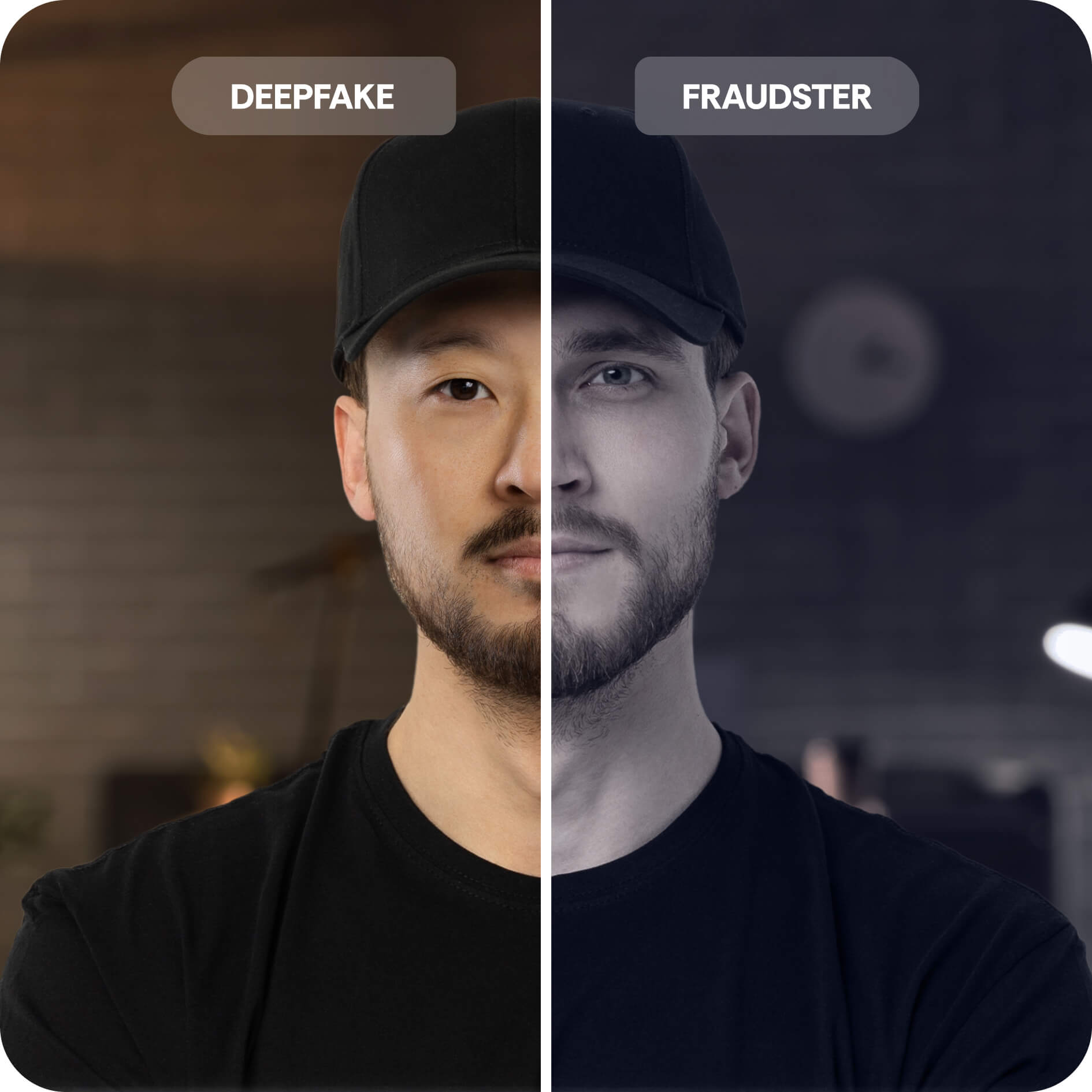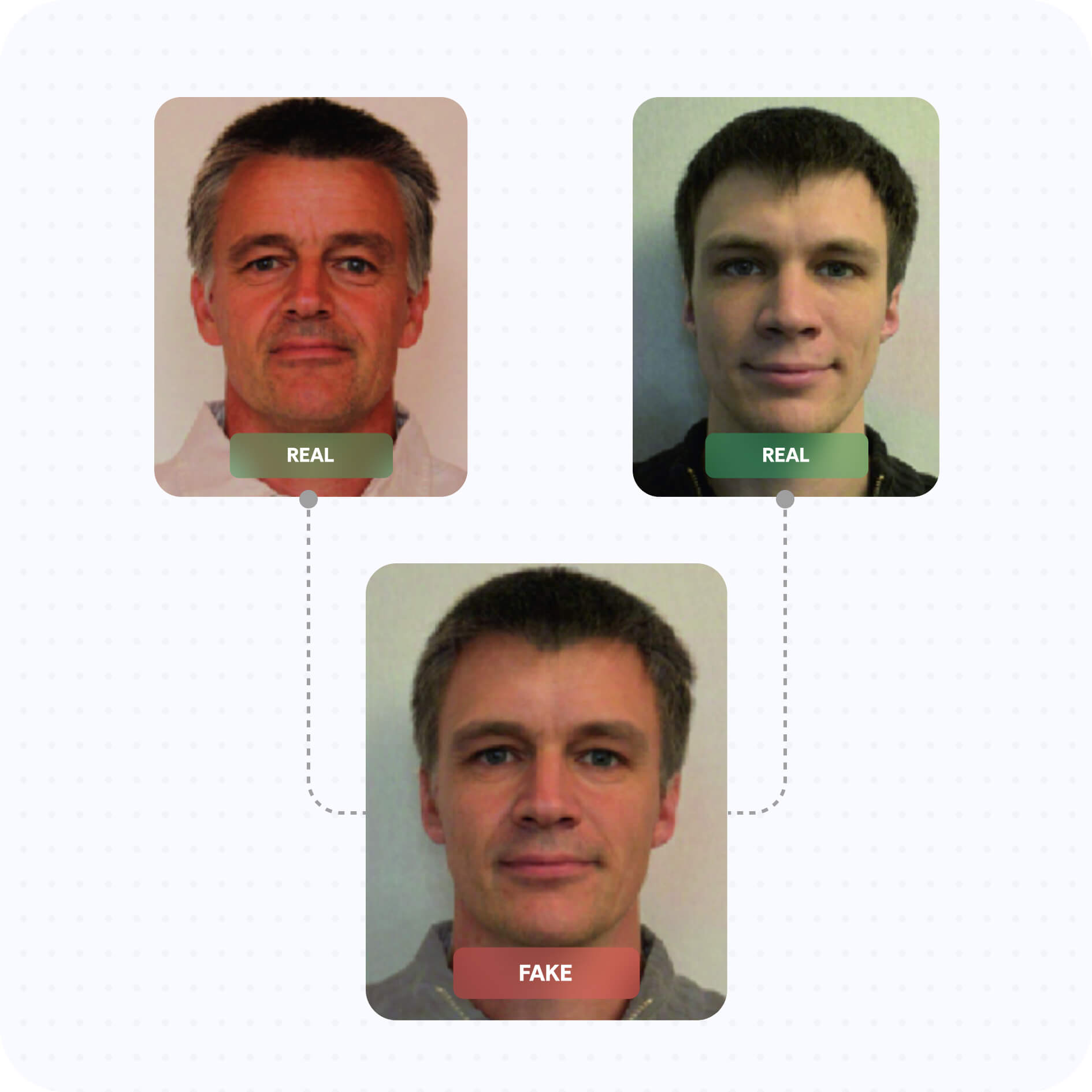Deepfake
detection
With Generative AI making synthetic images and videos easier to create, advanced Identity Verification technology is crucial for business security, compliance and growth.
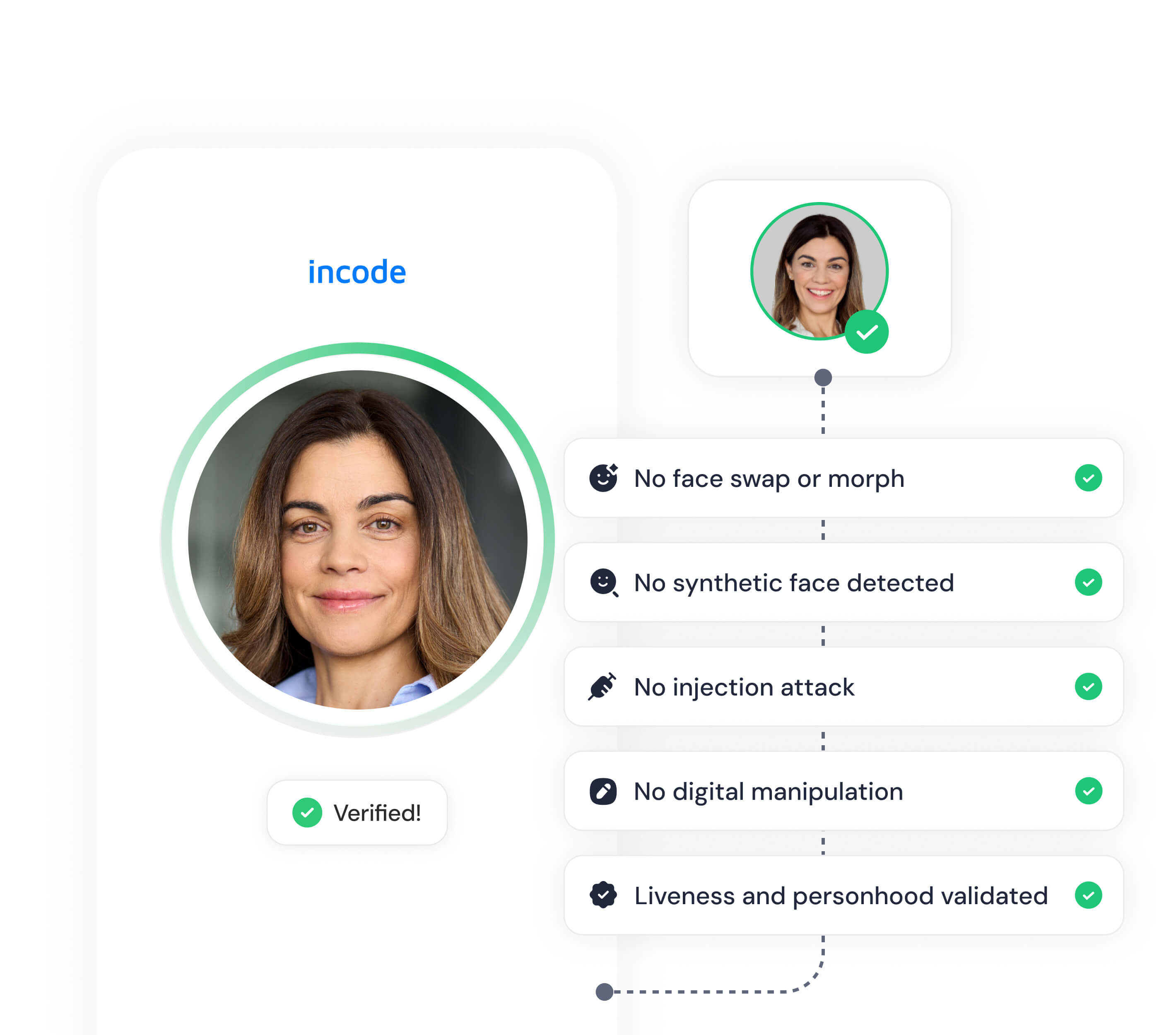
Top companies switch to Incode for our proven impact on fraud protection and growth

Other providers cannot keep up
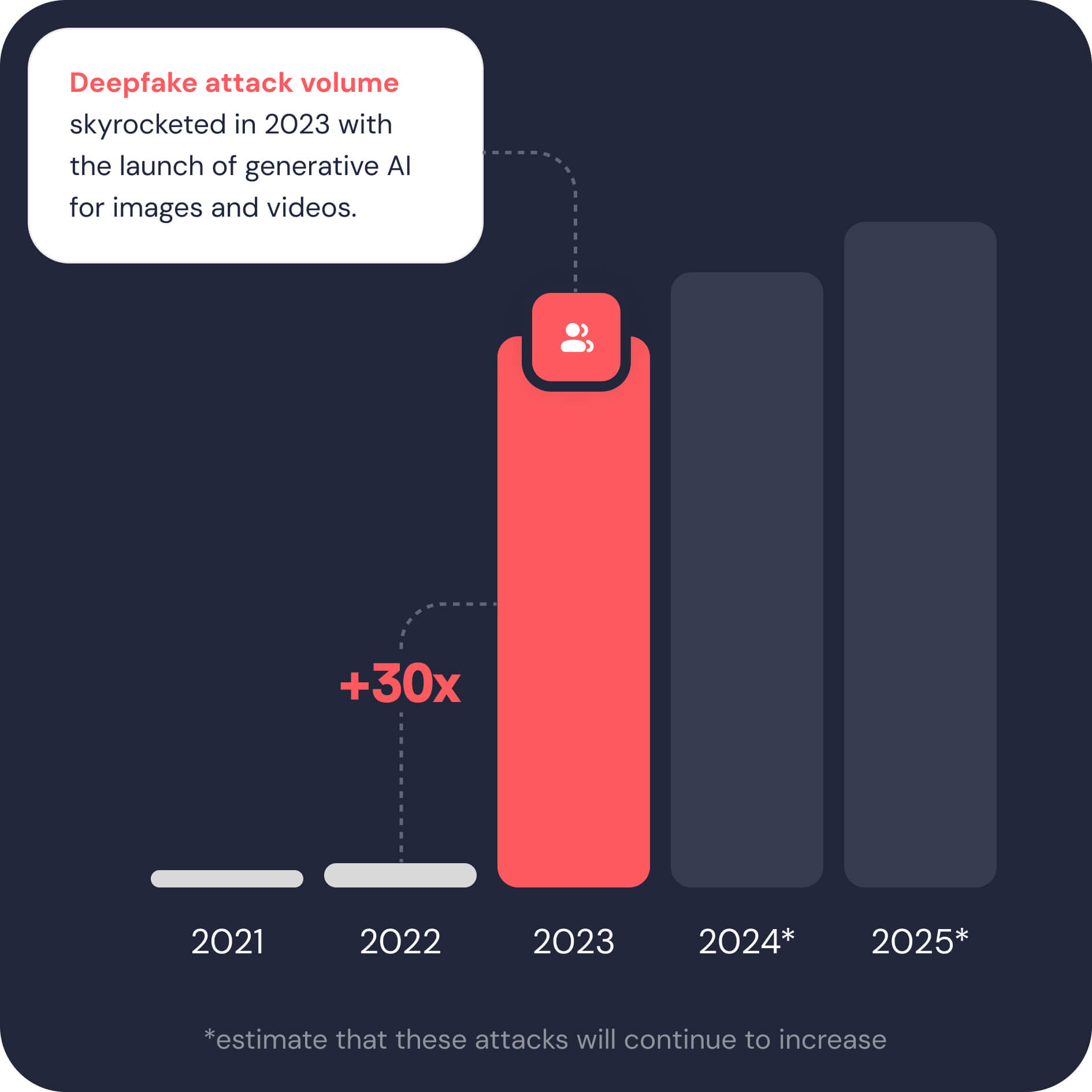
Legacy Identity Verification methods fail to detect and prevent new deepfake fraud vectors, costing businesses and their customers billions of dollars.
Increase in deepfake fraud
incidents from 2022 to 2023

How fraudsters leverage deepfakes to commit identity fraud
What is a deepfake?
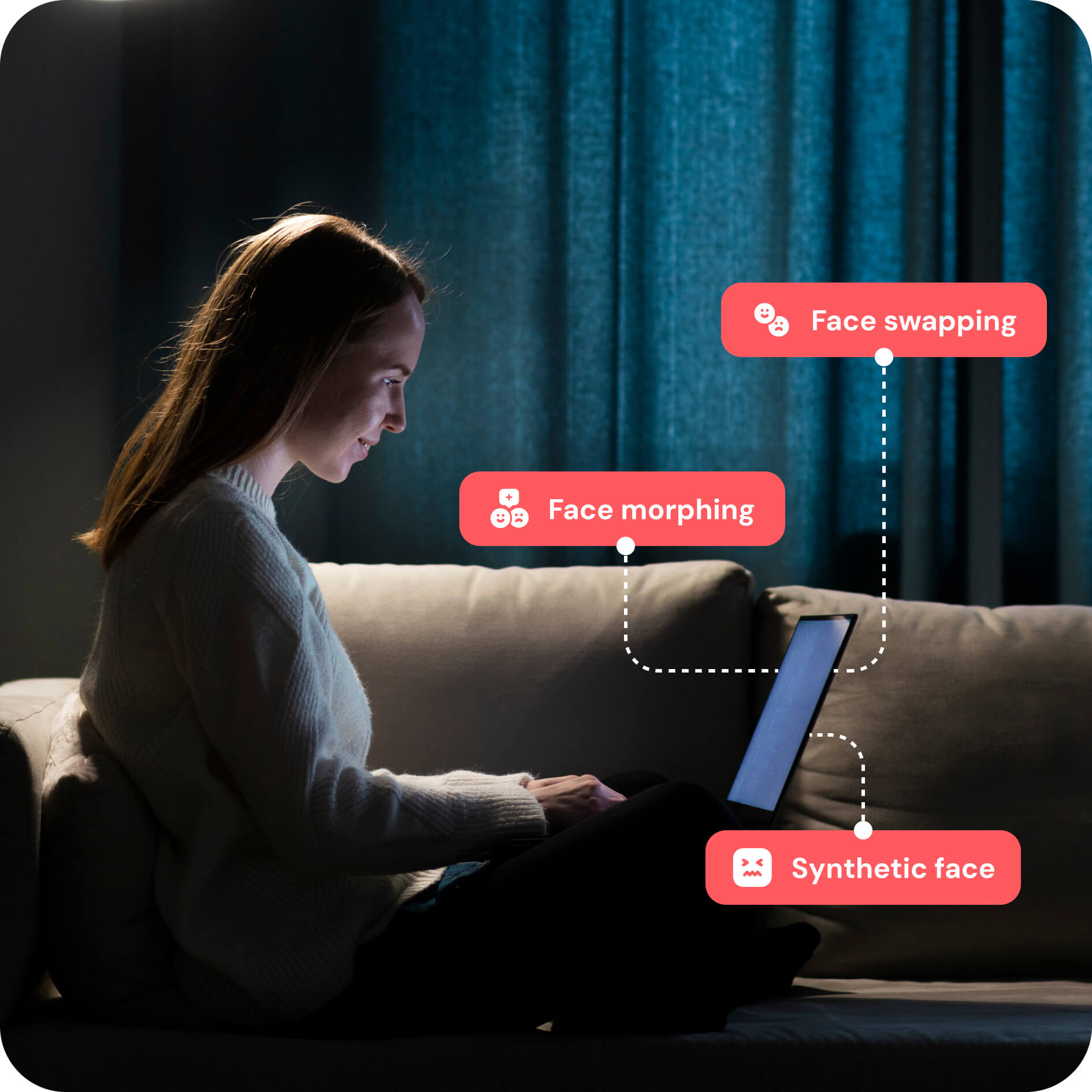
A deepfake is a digitally manipulated photo or video in which a person is replaced with someone else’s likeness, often using deep learning techniques such as generative AI. Deepfake methods include face swapping, face morphing and creating synthetic faces.
Of people can’t distinguish whether an image shows the real person or a deepfake

Injection attack
vs.
Presentation attack
What they are
Injection attacks replace genuine camera feeds with manipulated videos or images in an attempt to impersonate and deceive identity verification systems.
A presentation attack refers to deceiving the identity verification system by manipulating one’s appearance digitally or physically, often to impersonate someone else.
Fraud approach
Fraudsters use exploits like hooks, roots, and emulated devices to inject deepfake media as if captured by a real camera.
Presenting a high-quality printout of another person’s image, or presenting someone else’s image or video on another device screen are commonly used attempts to try and deceive the capture mechanism.
Detection
These exploits are hard to detect in browser-based verification but can be prevented using SDKs to detect emulated operating systems or virtual camera feeds.
Machine-learning models analyze the selfie and ID captures to validate a real person and ID document was captured by the camera, and look for digital or physical manipulation and other signs of visually detectable fraud.
Scalability
Easy to scale: More complex to execute, but the bypassing of manual camera capture makes it more scalable.
Hard to scale: Requiring the fraudster to present altered assets physically to the device camera, limits scalability of this method.
Incode uses proprietary, innovative technology to detect and prevent sophisticated deepfake fraud attempts
How it works
Incode’s biometric and ID authentication technology analyzes to confirm an individual is who they claim to be.
Detect face swaps and morphs
Incode’s AI-trained digital spoof check scans for inconsistencies in texture, motion and face contours to ensure the capture displays a real person at 99.6% accuracy.
Verify liveness and personhood
Passive liveness checks recognize with 99% accuracy during the selfie capture whether a real person is present or a synthetic image is shown.
Metadata analysis
Secondary data dimensions native to the device hardware allow for additional fraud signal analysis of the captured image. This is done immediately and passively behind the scene while the user simply takes a selfie.
Biometric match of selfie with ID photo
Matching the biometric hash of the selfie to that of the ID portrait, Incode’s face matching algorithm reveals with industry-leading accuracy of 1 in 79,000 whether both photos show the same individual or if one is digitally manipulated.
“Incode is a key strategic partner in helping us address our identity needs and prevent costly fraud with their impressive tech and exclusive government connections.”
Miguel Lavalle
Account Opening Head at Citi

Our customers have spoken
Incode is an industry leader in identity verification
Committed to the highest standards of data protection and security

Cyber Security
Excellence awards

Open Id
Certified

Soc 2
Type II

Iso
30107-3

Best use of AI
Authentications

Nist
800-53
IAL2
